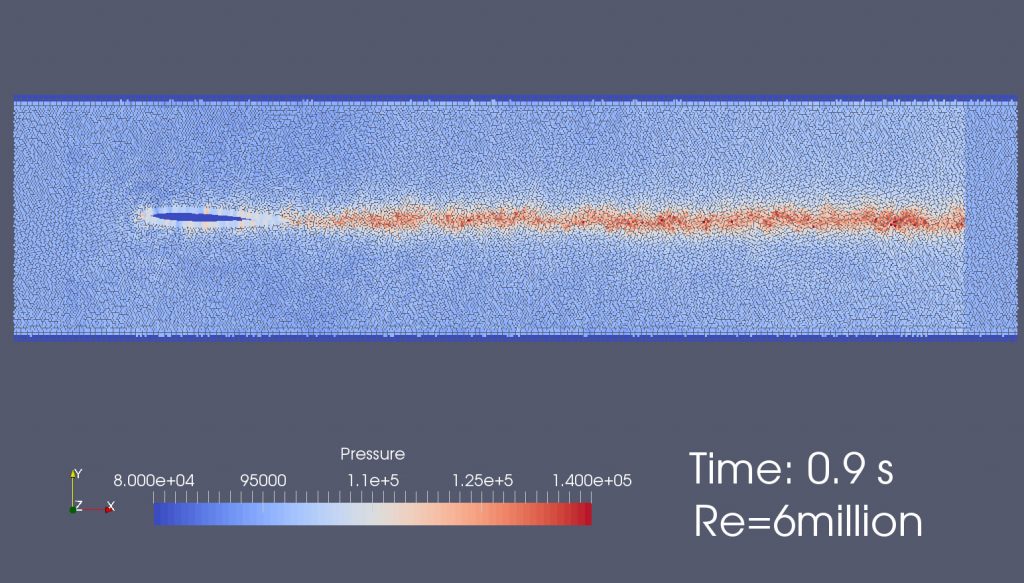By: Daniel Stubbs
Our project sought to develop a method for enabling smoothed particle hydrodynamics (SPH) to simulate fluid flow over a body using an inflow-outflow boundary condition that allows fluid to enter and to exit the computational domain.
With this boundary condition, inflow-outflow type simulations can benefit from the advantages SPH has over traditional computational fluid dynamics (CFD). For example, SPH is a particle-based method which, unlike traditional CFD, requires no grid mesh to be defined. Not requiring a mesh allows SPH to provide time savings and to handle simulations such as flow over complex shapes, mixing problems, or multiphase flow with relative ease. By giving SPH the ability to model the flow in and out of a domain accurately, SPH would naturally extend to a wider range of applications and would aid engineers as an efficient tool providing valuable insight into the intricate details of aerodynamic flows. Such insight would assist engineers in developing more efficient and capable designs.
Fig. 1: SPH simulation of a NACA0012 airfoil in an aerodynamic flow
This project began with an existing SPH simulation code already capable of simulating flow within a closed domain. The code was then extended by developing methods allowing for fluid particles to flow through the domain, leaving through an outlet and re-entering through an inlet. As part of this inflow outflow condition, methods were developed for resetting the particle properties upon exiting and re-entering the domain as well as for providing buffer regions at the outlet and inlet to ensure that the simulation would remain stable. Once these capabilities had been added to the simulation code, test cases were run on fundamental fluid dynamics problems such as flow over cylinders and airfoils. The results of these simulations were compared against widely available and accepted verification data.
Results from this project show that the inflow-outflow condition is working well, but that there are still some underlying issues within the core equations used in the simulation, particularly regarding boundary conditions and data extraction from solid boundaries. Figure 1 shows the aerodynamic flow around a two dimensional airfoil shape, which exemplifies the current capabilities of the simulation. The next steps for this project are to investigate the equations being used, to determine methods to improve the model’s accuracy, and to remove some of the shortcomings of the simulation in its current state. Future projects will seek to make the code capable of 3-D combustion reaction simulations as well as giving the code the ability to run on modern high-performance computing technologies such as multi-node supercomputers and GPU clusters.
Having developed a working method for allowing fluid to flow in and out of the computational domain in an SPH simulation, this project has laid the ground work and provided valuable lessons for future efforts with SPH. With this foundation in place, SPH is on course to be fully capable of simulating complex
fluid flow over any geometry, simple or complex, allowing insight into the fluid dynamics around shapes which challenge existing technology.
Statement of Research Advisor
Daniel’s research project focused on extending SPH from its typical regime of incompressible fluids in closed
domains to compressible flows with open boundaries. During his research, Daniel designed a stable, buffered
inflow-outflow boundary condition, developed a methodology to improve the placement and use of solid
boundary particles, and studied multiple combinations of the Lagrangian forms of the compressible conservation
equations.
—Dr. Stephen Nichols, Aerospace Engineering.
Last Modified: